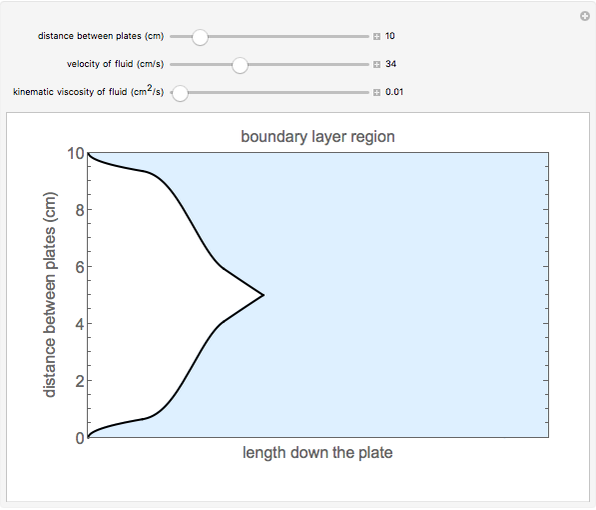Boundary Layer in Flow between Parallel Plates


Description
This simulation calculates the thickness of a boundary layer for flow between stationary parallel plates as a function of distance down the plates. You can vary the distance between the plates, fluid velocity and kinematic viscosity with sliders. The boundary layer (shaded light blue region) represents the region where viscous forces must be taken into account due to the no-slip condition. Outside of the boundary layer (white region), viscous forces are negligible. Once the two boundary layers meet midway between the plates, the fluid flow is fully developed.
About
This simulation was made at the University of Colorado Boulder, Department of Chemical and Biological Engineering. Authors: Jaeda C. Sichel, Rachael L. Baumann
View the source code for this simulation
